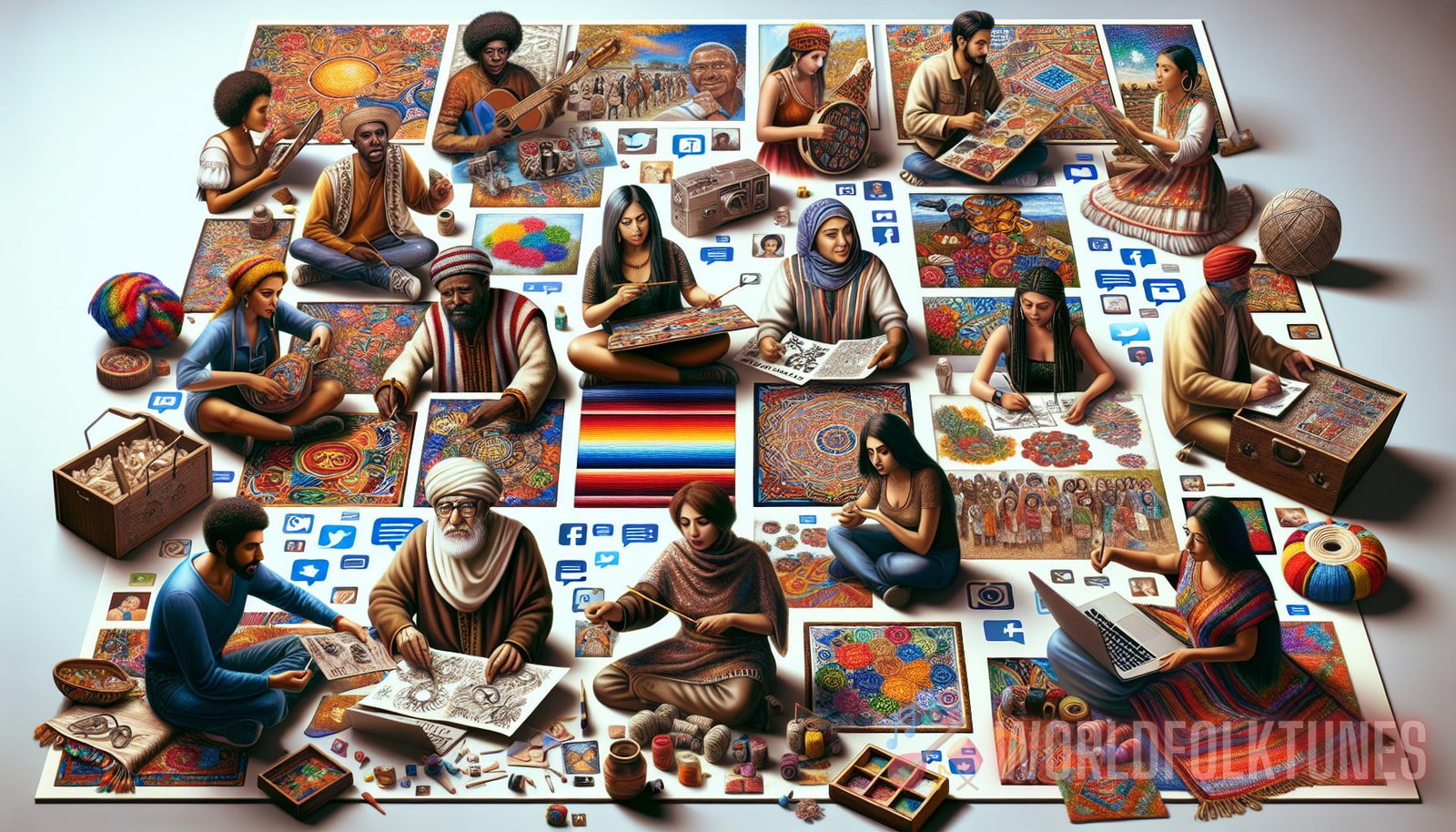Preserving Heritage: Unearthing the Cultural Resurgence of Folk Artistry
Folk art holds a significant place in the tapestry of human culture, cherished for its authenticity, tradition, and rich storytelling. The unique artistic expressions found within folk art serve as a bridge between generations, offering a glimpse into the lives, beliefs, and aspirations of our cultural ancestors. In recent years, there has been a cultural revival, a renewed interest in folk artistry. This guide will delve into the resurgence of folk art, exploring the reasons behind its revival and celebrating the artists who are preserving this invaluable heritage.
The Significance of Folk Art
Folk art, rooted in the everyday lives of common people, encompasses a diverse range of artistic traditions, including painting, sculpture, ceramics, textiles, and music. What sets folk art apart is its connection to the community it originates from. Passed down through generations, folk art represents shared experiences, cultural values, and folk beliefs.
One of the primary characteristics of folk art is its regional identity. Each culture, community, or even village within a larger region has its own folk art traditions, reflecting the distinctive quirks and nuances of that particular place. These traditions often develop from necessity, using locally available materials and techniques.
Moreover, folk art is deeply intertwined with storytelling. Whether it is through visual art, music, or crafts, folk artists are master storytellers. They use their art to convey mythologies, historical events, social commentary, and personal narratives. This storytelling aspect of folk art connects us to our roots, helps us understand our past, and inspires our creativity in the present.
The Resurgence of Folk Art
In recent years, there has been a remarkable resurgence of interest and appreciation for folk art. People are rediscovering the value of preserving cultural heritage and seeking out the beauty and authenticity found within traditional forms of art.
One of the driving forces behind this cultural revival is the desire for connection and authenticity in an increasingly digital and globalized world. As our lives become more streamlined and homogenized, many individuals are yearning for something genuine and unique. Folk art offers an escape from mass-produced, cookie-cutter designs, providing an opportunity to appreciate art that is deeply rooted in specific communities and cultures.

Furthermore, the rise of social media has played a significant role in the resurgence of folk art. Artists and enthusiasts now have platforms to share and promote their work, reaching a much wider audience than ever before. Folk artists who previously struggled to gain recognition can now connect with fellow artists, collectors, and art lovers from all over the world, fostering a global community of preservation and appreciation for folk artistry.
Additionally, the globalization of the art market has led to a renewed interest in folk art. Collectors and art enthusiasts are increasingly drawn to the unique and authentic narratives embedded within folk art. They recognize the cultural and historical significance of these art forms and are willing to invest in preserving and showcasing them.
Preserving Folk Art
Preservation is essential to ensure the future of folk art. With the rise of modernization and urbanization, many traditional art forms and techniques are at risk of extinction. It is crucial to support and encourage the artists who carry the torch of these art forms, ensuring that future generations can experience the beauty and significance of folk art.
There are several ways in which we can contribute to the preservation of folk art:
- Support Folk Artists: Take the time to research and discover folk artists in your area or from different regions. Attend their exhibitions, purchase their artwork, or commission pieces to encourage them to continue their craft.
- Become a Collector: Consider starting your collection of folk art. By collecting and preserving these pieces, you play an active role in safeguarding the heritage and cultural narratives they represent.
- Attend Folk Festivals and Workshops: Participate in folk festivals, workshops, and cultural events. These gatherings not only provide a platform for artists to showcase their work, but they also offer opportunities to learn traditional techniques and engage with the cultural heritage firsthand.
- Support Folk Art Organizations: Donate to or volunteer with organizations that work towards the preservation and promotion of folk art. These organizations play a vital role in raising awareness, providing resources, and creating opportunities for folk artists.
Examples of Folk Art Revival
The resurgence of folk art can be witnessed around the world, with artists and communities breathing new life into traditional art forms. Here are a few examples:

1. Gond Art – Gond art is a traditional form of painting practiced by the Gond tribe in central India. It was historically used to decorate the walls and floors of homes, but is now gaining recognition as a contemporary art form. Gond artists depict intricate patterns inspired by nature, mythology, and tribal folklore using vibrant colors and fine lines. The revival of Gond art has provided economic opportunities to the Gond community while preserving their cultural heritage.
2. Ukrainian Pysanky – Pysanky is the traditional Ukrainian art of decorating Easter eggs. In recent years, there has been a resurgence of interest in this intricate art form, with artists creating stunning designs using traditional wax-resist techniques. Pysanky workshops and festivals have emerged to pass on the knowledge and skills to new generations, ensuring the continuity of this ancient tradition.
3. Appalachian Quilting – Appalachian quilting is a traditional craft practiced in the Appalachian region of the United States. Quilting circles and organizations have formed to preserve and promote this art form, hosting exhibitions and workshops. The renewed interest in Appalachian quilting has not only preserved the tradition but also breathed new life into it, with contemporary artists incorporating modern designs and techniques into their quilts.
Conclusion
Folk art continues to captivate and inspire us, providing a connection to our cultural roots and offering a glimpse into the lives of our ancestors. The cultural resurgence of folk artistry is a testament to the timeless appeal of these art forms and our collective desire to preserve and celebrate our heritage.
By supporting folk artists, participating in cultural events, and fostering an appreciation for traditional art forms, we can ensure that these invaluable cultural treasures are preserved for future generations to enjoy.
External Link: https://en.wikipedia.org/wiki/Folk_art
Internal Links:


